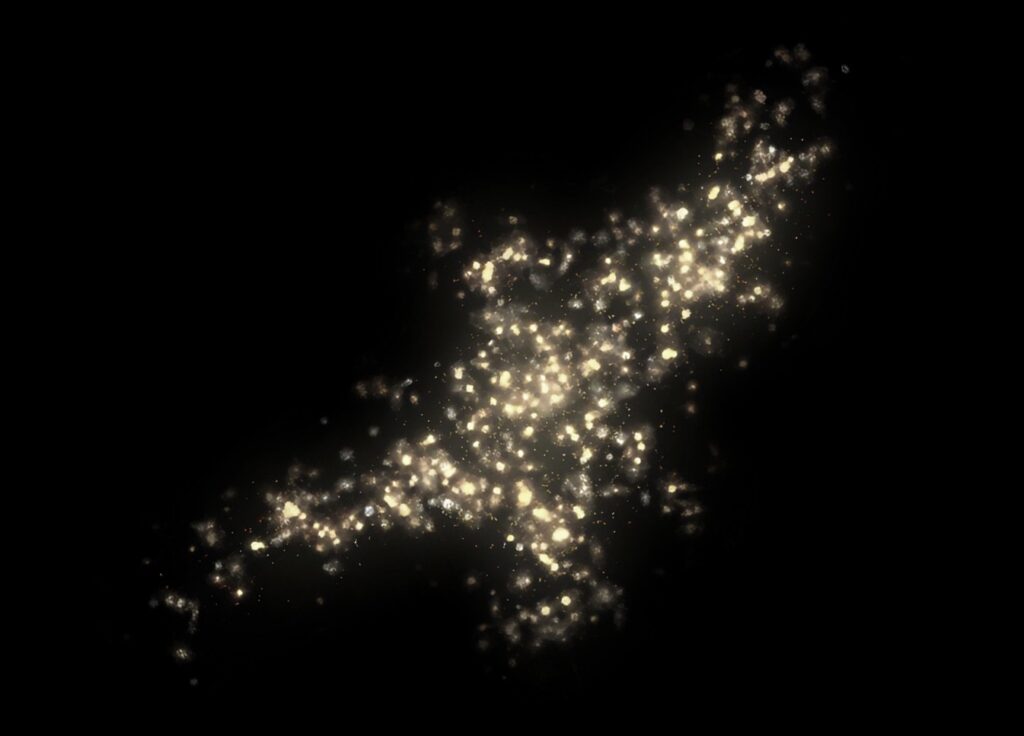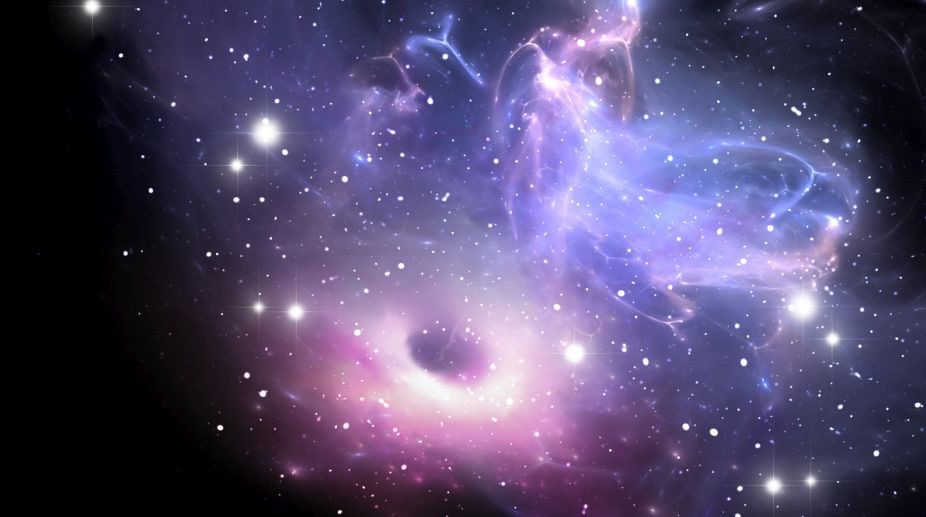In the grand cosmic scale, the Universe unfurls like an intricate interstellar tapestry. Stars, such as our very own Sun, are woven into formations known as galaxies. These galaxies, in turn, are stitched into more significant structures called galactic groups. The gravitational pull strings these groups into galaxy clusters. Occasionally, these clusters intertwine, forming the colossal structures recognized as “Superclusters”. These cosmic titans embody baryonic masses reaching into millions or even billions of solar masses and sprawl tens to hundreds of megaparsecs. In essence, they sketch out the largest scale structure in the Universe, housing tens to hundreds of galaxy clusters. One such recent discovery in this cosmic array is the enigmatic entity, known as the Saraswati supercluster.
The Space Odyssey: Discovery of the Saraswati Supercluster
The revelation of the Saraswati supercluster surfaced in 2017, unveiled by a team of intrepid Indian astronomers from renowned institutions like the Inter-University Centre for Astronomy and Astrophysics and the Indian Institute of Science Education and Research.
Tracing Origins: The Saraswati Supercluster
“Saraswati”, a term that echoes Proto-Indo-European roots, is referenced in ancient Indian scriptures as the primary river nourishing the civilization of that era. Also, it symbolizes the heavenly goddess, the guardian of celestial rivers. In contemporary India, Saraswati is venerated as the divine epitome of knowledge, music, art, wisdom, and nature.
Location and Structure: Where Does Saraswati Lie?
The Saraswati Supercluster, nestled 1.2 gigaparsecs away, or 4 billion light-years in the direction of the constellation Pisces, is one of the mammoth structures ever detected in the Universe. It extends over 200 megaparsecs, approximately equivalent to 650 million light-years, housing more than 40 validated galaxy clusters. Its mass tips the scales at more than 2 x 10^16 solar masses (one solar mass weighs in at 2 x 10^30 kg). Superclusters of this magnitude are sparse; there are just a handful known in the Universe.
Unraveling the Enigma: The Discovery of the Saraswati Supercluster
The unveiling of the Saraswati Supercluster is a testament to human ingenuity and the advancing frontier of cosmic exploration. This significant breakthrough was realized through meticulous spectroscopic observations conducted on an expansive celestial realm known as stripe 82. Harnessing advanced statistical techniques, astronomers succeeded in spatially connecting galaxies, bringing into focus the panoramic spectacle of the Saraswati Supercluster.
Contained within this galactic behemoth are over 40 confirmed galaxy clusters, encapsulated by expansive galactic voids. The heaviest clusters form a formidable wall-like formation within Saraswati, adorned with prominent filamentary features that evolve over time.
Dr. Joydeep Bagchi from the Inter-University Centre for Astronomy and Astrophysics (IUCAA), the leading author of the acclaimed research paper, alongside co-author Shishir Sankhyayan, a distinguished Ph.D. scholar at the Indian Institute of Science Education and Research (IISER), detailed their surprise at spotting this colossal, wall-like supercluster of galaxies. This sighting was enabled by the broad spectroscopic survey of distant galaxies, illustriously known as the Sloan Digital Sky Survey.
Bagchi elucidates, “This supercluster appears unmistakably intertwined within a large network of cosmic filaments demarcated by clusters and expansive voids.” Adding further insights, he notes, “In the known universe, only a select few superclusters of significant size have been reported, notable examples include the ‘Shapley Concentration’ and the ‘Sloan Great Wall.’ However, the ‘Saraswati’ supercluster is significantly more distant.”
The discovery and study of Saraswati, he reckons, could potentially illuminate the puzzling question of how such incredibly large scale, dense matter conglomerations came into existence billions of years past, during a time when the elusive Dark Energy had just started to influence structure formation. Exploring such cosmic wonders could potentially unlock secrets about the birth, evolution, and fate of our Universe.

The Unusual Phenomenon: Saraswati Supercluster’s Singularity
As astronomers delve into the intricate fabric of our cosmos, the Saraswati Supercluster stands out as a captivating curiosity. It’s not just the sheer size or the number of galactic clusters it embraces, but its implications on our understanding of cosmological theories that makes Saraswati an enigma.
Superclusters, like Saraswati, serve as cosmic laboratories, offering insights into the machinations of general relativity and gravity. Yet, Saraswati goes beyond contributing to our understanding of structure formation. Due to its magnitude and distance, it also acts as a litmus test for numerous cosmological models.
With its impressive size, Saraswati is among the most immense superclusters discovered. Yet, its real intrigue comes from its ability to serve as a cosmic time machine. Located 4 billion light-years away, observing Saraswati offers us a glimpse back into a time when the Universe was roughly 10 billion years old, about 70% of its current age. This revelation leads us to a cosmic conundrum.
The Cosmic Quandary: Examining Saraswati’s Existence
Our current theoretical models struggle to explain how such a colossal structure could have formed in the early Universe. Simulations of cosmological development suggest that the emergence of a supercluster of Saraswati’s breadth is an unlikely event. Its existence with a redshift of 0.3 situates Saraswati within the epoch known as the “cosmic transition.”
This unique period marks the Universe’s transition from being dominated by ordinary, or baryonic, matter to an era under the rule of dark energy – a mysterious entity believed to be responsible for the Universe’s accelerating expansion. This intriguing aspect presents an exciting perspective to consider: does Saraswati have a peculiar relationship with dark energy?
The Untrodden Territories: The Future of Cosmic Exploration
Behind every profound discovery lies a horizon of possibilities. The unveiling of the Saraswati supercluster, a cosmic titan, presents astronomers with novel means to probe the mysteries of the Universe. It throws open the doors to mathematical corridors, offering theories and models that can illuminate our understanding of the Universe’s infancy.
Superstructures like Saraswati are the key to unraveling the enigma of primordial density fluctuations. Delving deeper into the character of these fluctuations can usher in a profound understanding of the Universe’s blueprint. As explorers venturing in the realm of the cosmos, scientists envisage that the discovery of similar superstructures will edge us closer to a comprehensive understanding of cosmic riddles.
Saraswati, in essence, becomes the stepping stone for astronomers aiming to study the early Universe’s architecture. Its age, size, and structure provide a significant research ground for probing theories about cosmic infrastructure and gravitational fundamental principles.
Continuing the Quest: The Ongoing Studies on the Saraswati Supercluster
Planetary scientists and astronomers are persistently pursuing follow-up studies on the Saraswati supercluster. This includes spectroscopic observations to delineate the supercluster’s boundaries and X-ray observations to ascertain its overall mass content. The size and complexity of the Saraswati supercluster make it an enticing area for research.
Remember, only a handful of superclusters equivalent to Saraswati’s size have been identified across the Universe, marking it as a precious cosmic artifact. Through studying the details of these colossal structures, we can unearth solutions to numerous cosmic mysteries. Simultaneously, this exploration will inevitably expose us to unprecedented scientific challenges – laying the groundwork for future discoveries.
Conclusion
Charting the cosmic labyrinth, the discovery of the Saraswati Supercluster signifies a significant stride in our understanding of the Universe’s grand architecture. It underlines the vastness of the cosmos while illuminating the path for further celestial exploration. As we continue unearthing more cosmic enigmas like Saraswati, we are drawing a detailed map of our Universe, each finding guiding us deeper into the mesmerizing realms of the cosmos.





